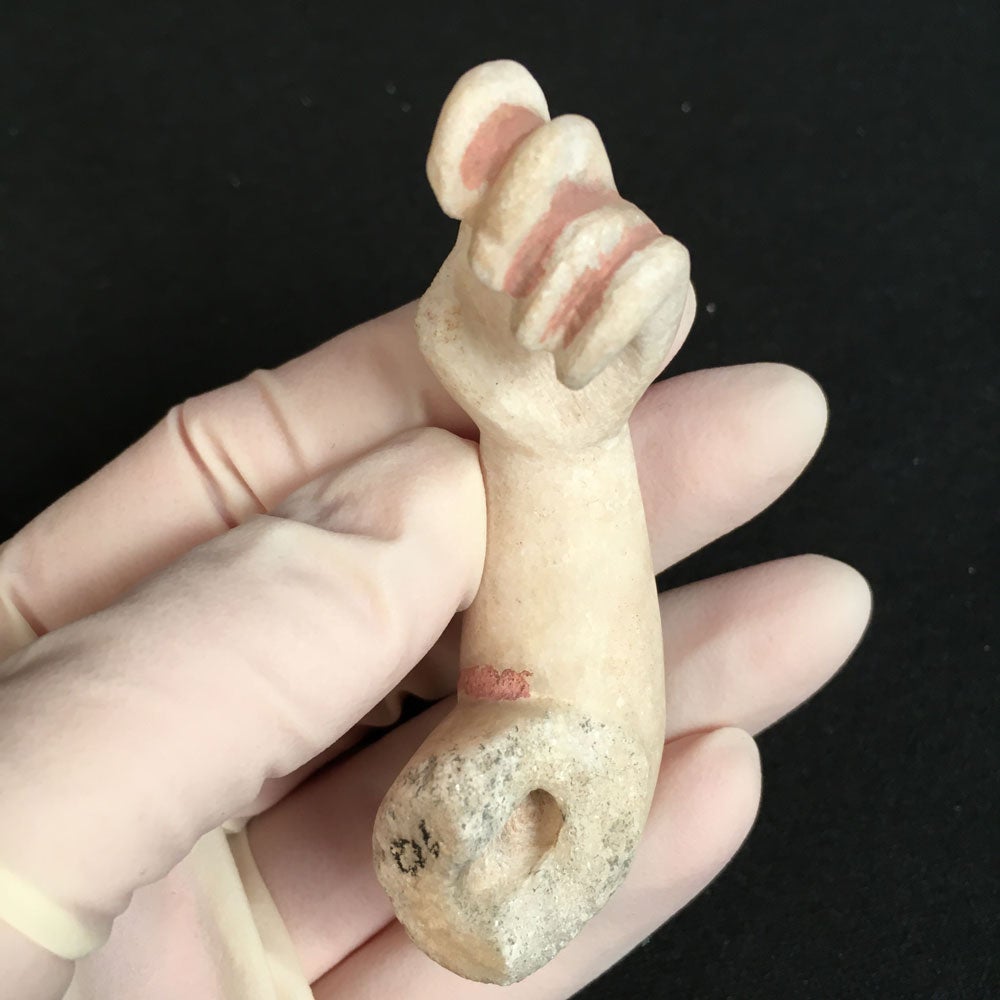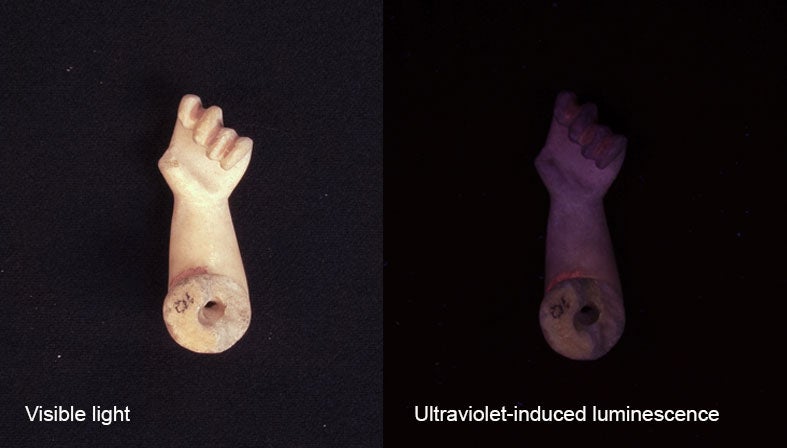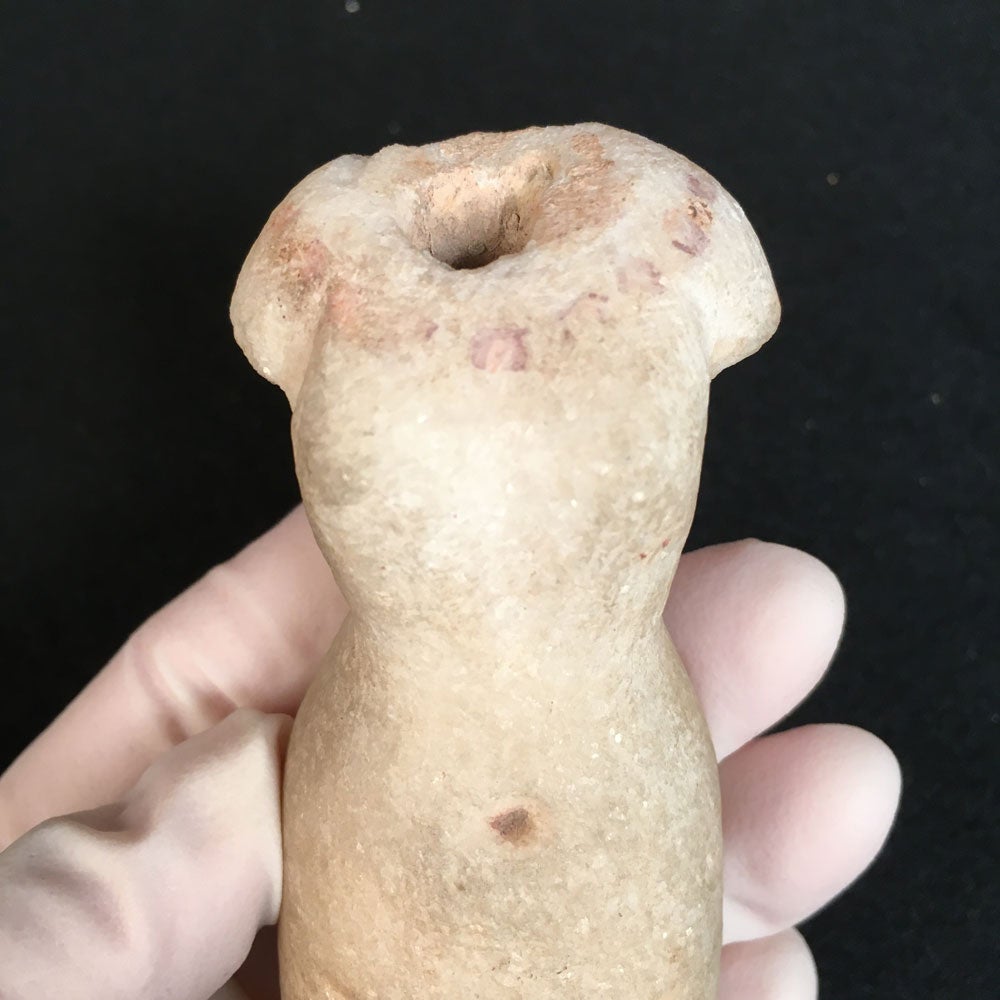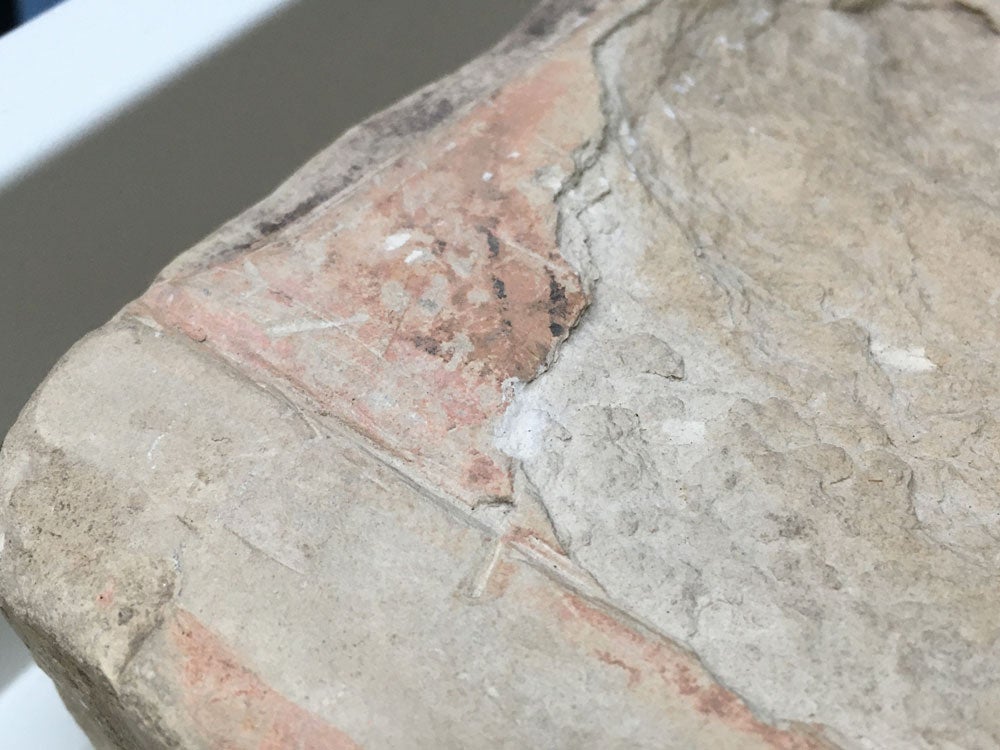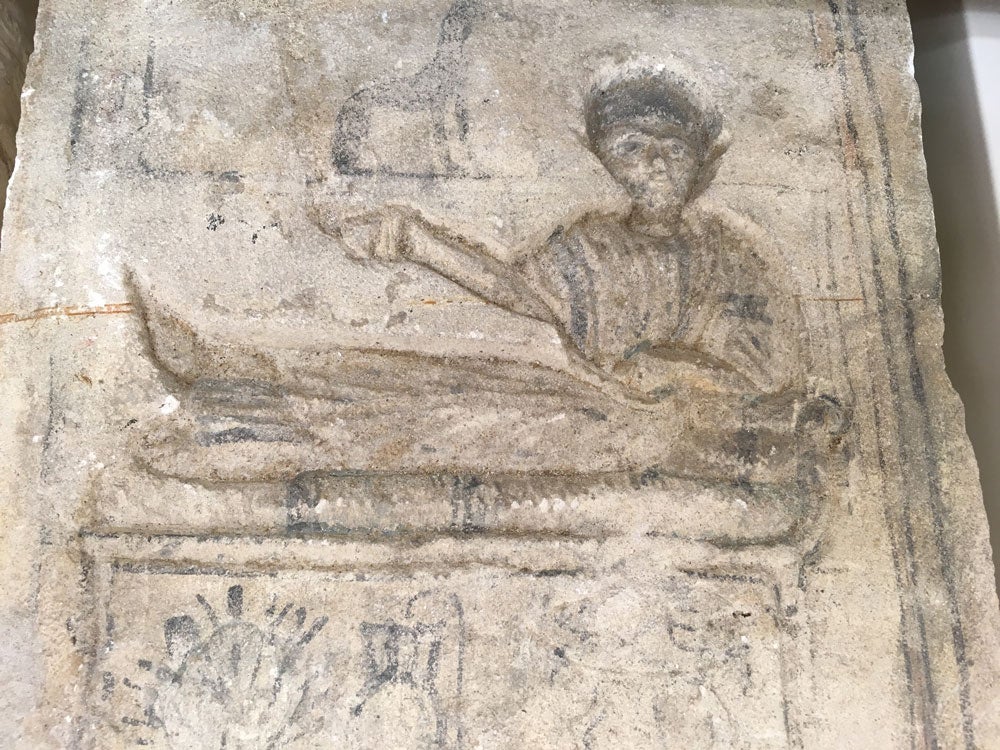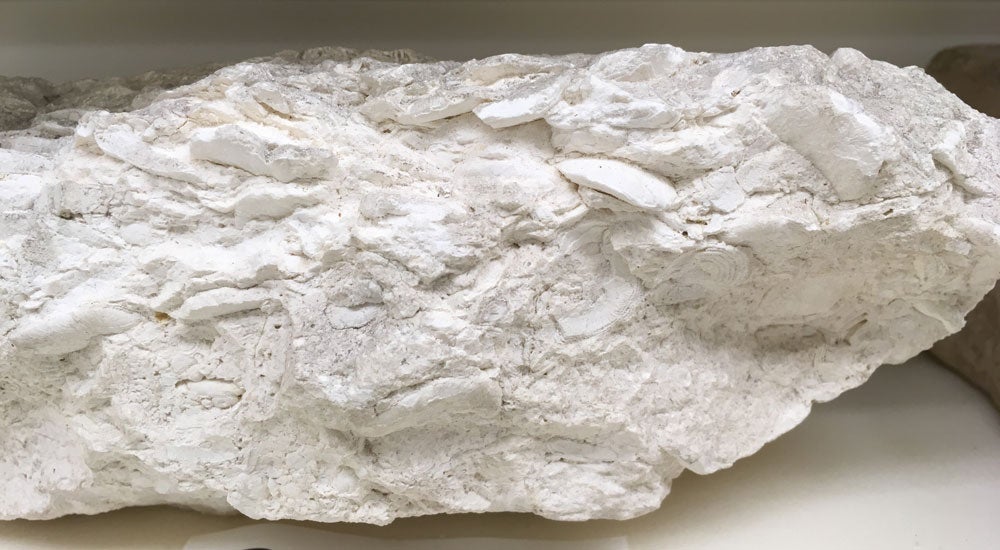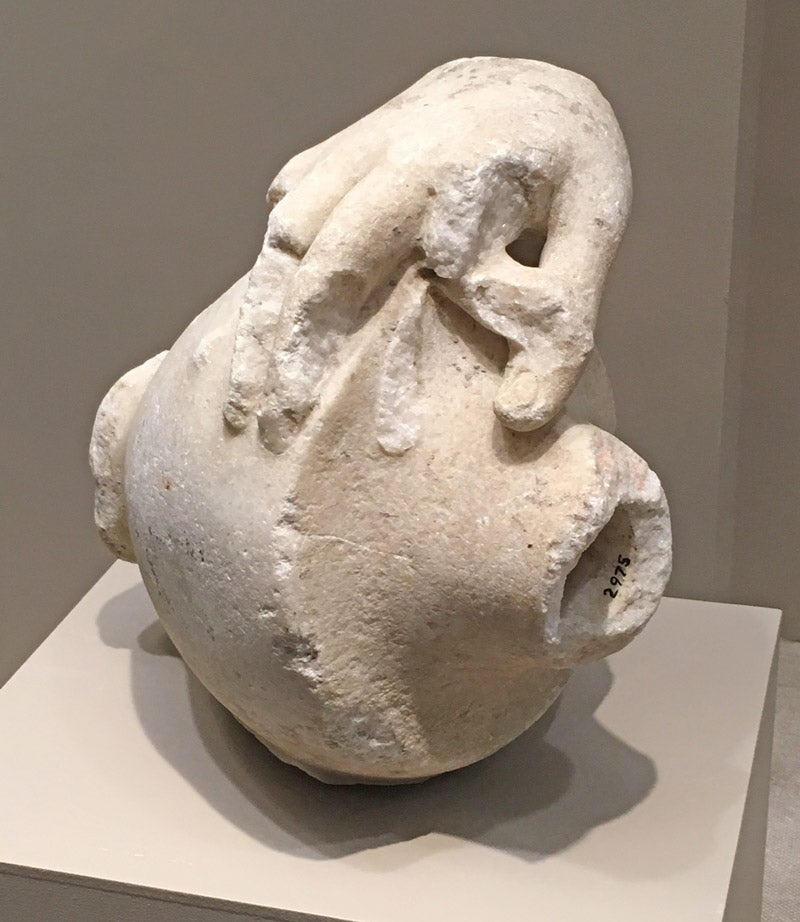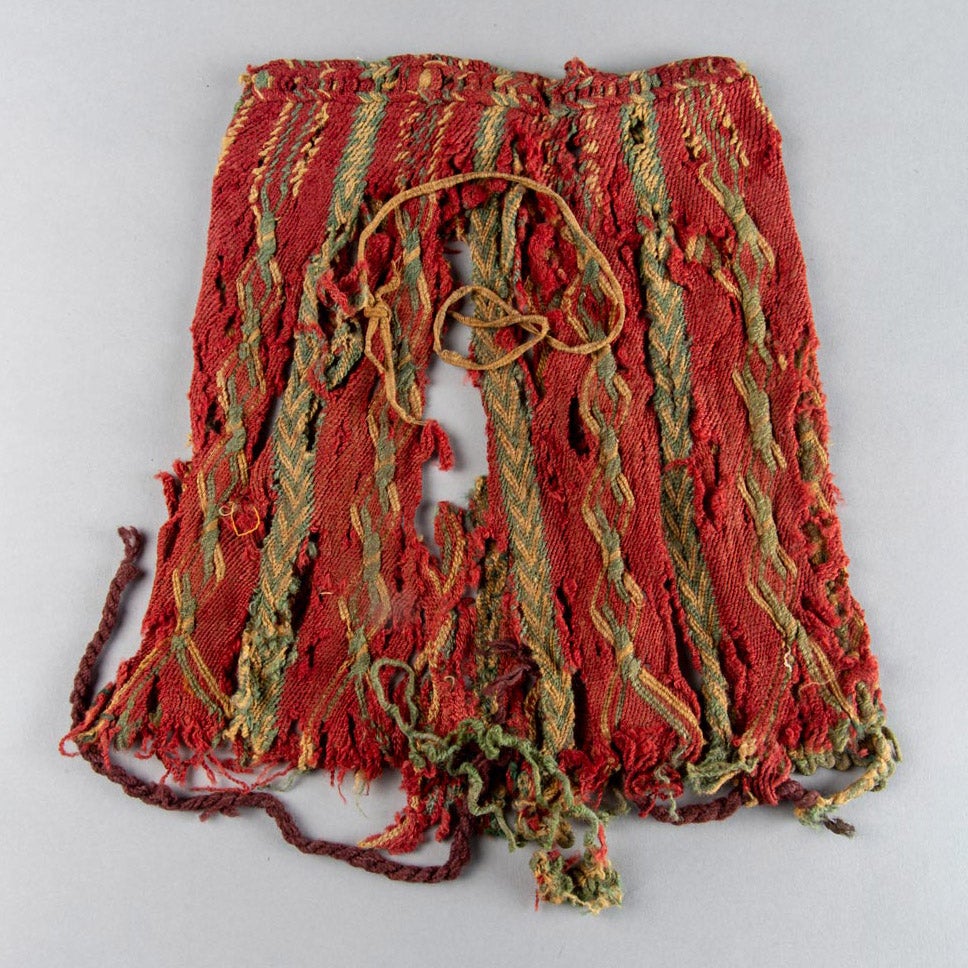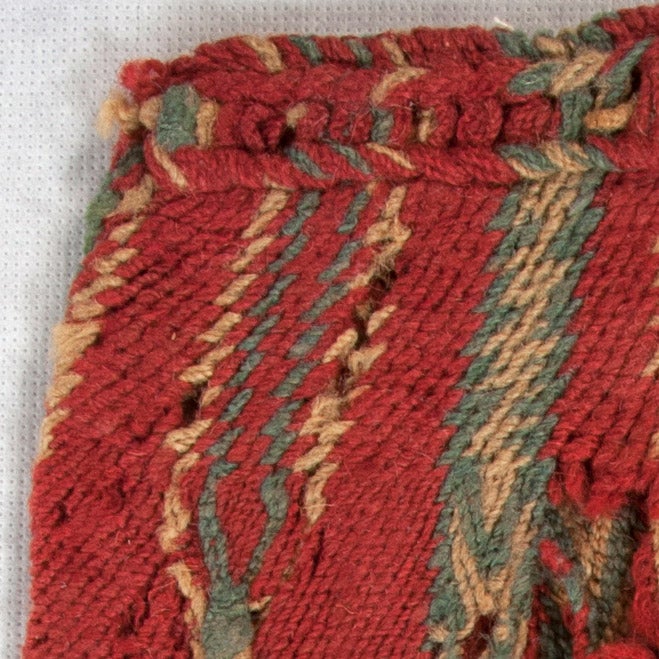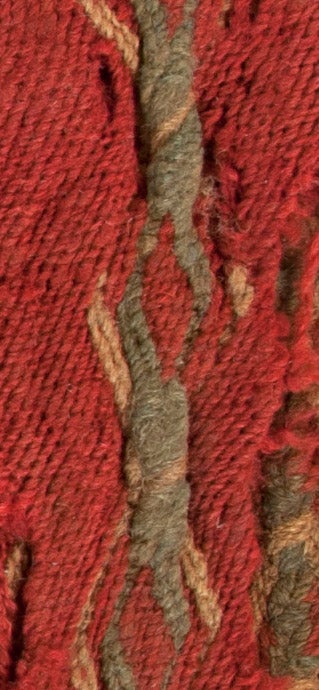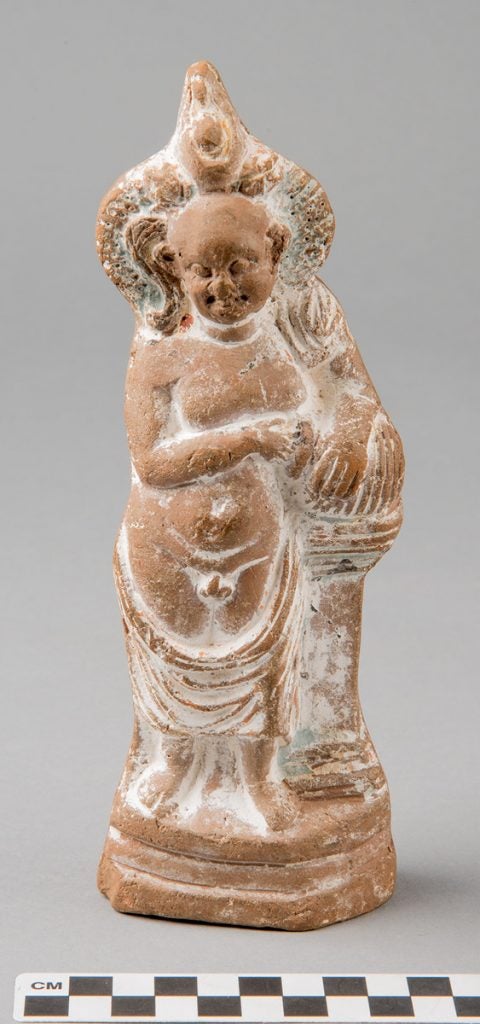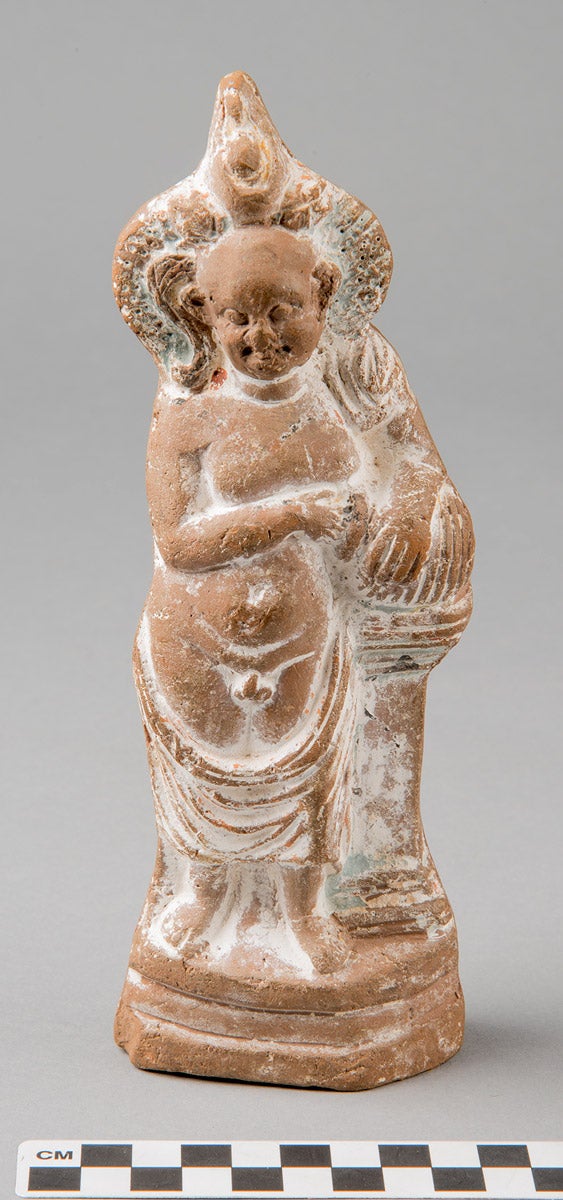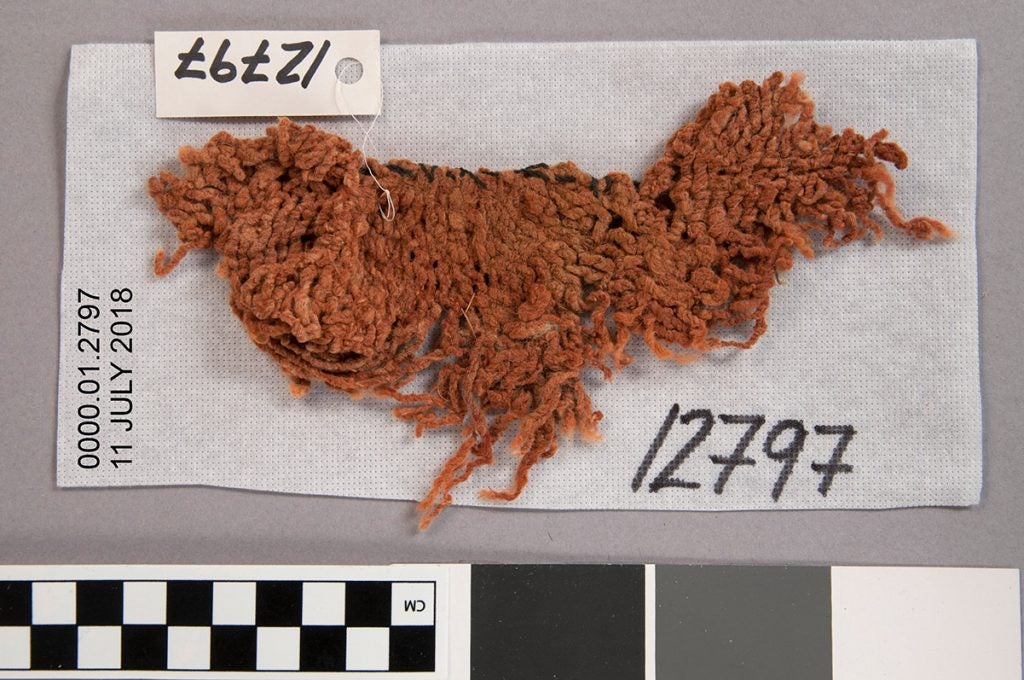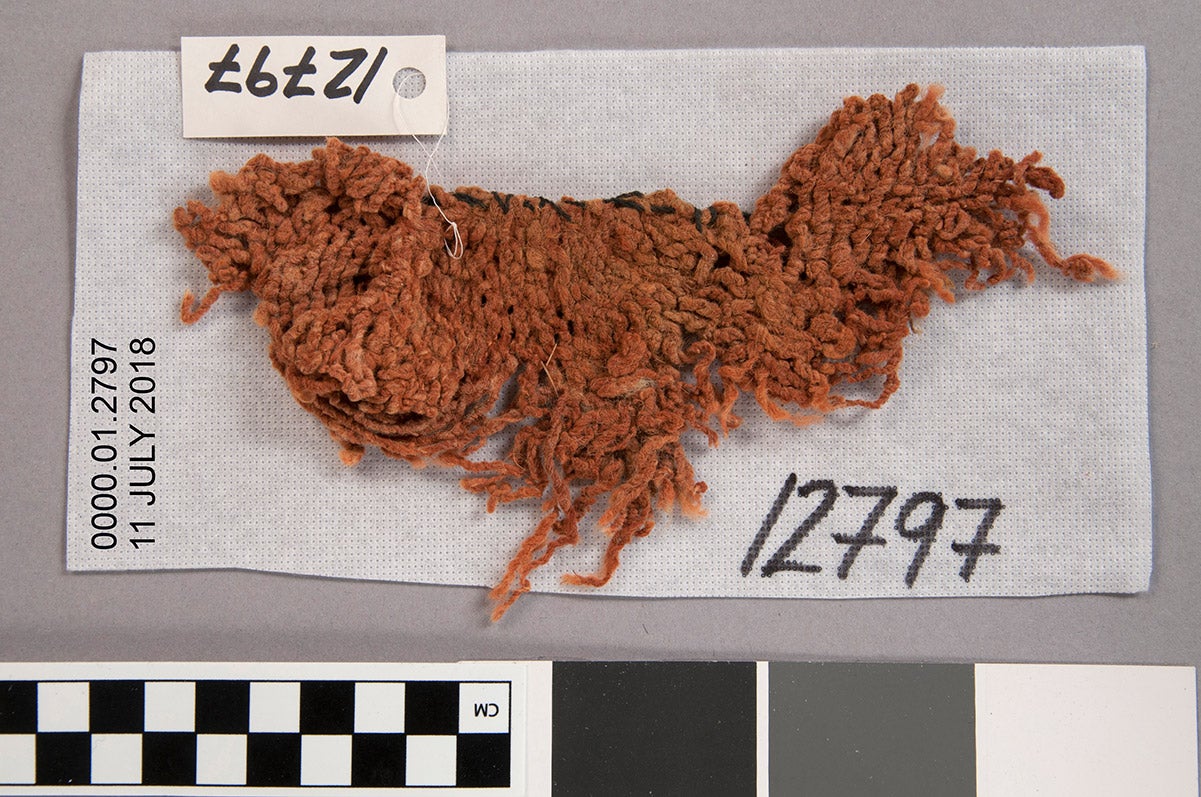Ugly Object of the Month — February 2021
By Caroline Roberts, Conservator
I’ve got one question for you, Ugly Object fans. Do you feel lucky? I hope so! Because for this month’s pick, you’ll need it. I stumbled upon this questionably ugly pair of dice while looking through a drawer of gaming pieces from Karanis and other Roman Egyptian sites. They immediately stood out: two bright spots of color in a sea of otherwise beige bone dice — the kind of blue-green I’m used to seeing on faience objects or glazed steatite scarabs. I checked them under the microscope (canaliculi, check, definitely made of bone) and saw that the blue-green color was superficial, almost like a stain, on the surface. It’s quite possible the dice were buried near a bronze artifact and the green is the unintended result of copper corrosion. But the absence of color in the grooves of the dots makes me wonder if the green might have been deliberately applied. I’d like to imagine it was!

What materials and techniques might have been used to transform these bone gaming pieces into someone’s lucky green dice? I’m hoping to answer this and other color research questions when we launch our NEH–funded color survey of the collection later this spring. In the meantime, keep tuning in to the Kelsey blog for more curios from the Kelsey’s countless cabinets!
Ugly Object of the Month — February 2021 Read More »


